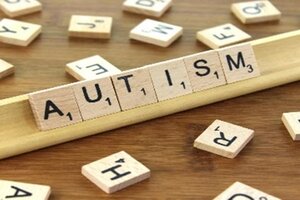What is Autism?

Welcome to the Social Communication Team’s introduction to autism. Here you will find videos we have created to answer some of the questions you might have.
Autistic people can sometimes feel misunderstood. We are committed to promoting autism awareness and acceptance in wider society to:
- increase everyone’s understanding of the needs of those on the spectrum;
- to prevent intolerance;
- to promote reasonable adjustments.
The videos on our pages cover topics and questions we are frequently asked by the families we support after a diagnosis has been given.
We have also provided several links to videos made by other organisations. Some of the videos are made by autistic individuals which help to understand the autistic perspective.
We hope you will find the videos useful in developing your understanding of autism.
In this first video, we explain what autism is and the features we are looking at when we diagnose children. Click here to access a transcript of this video as a translatable webpage.
We have also provided several links to videos made by other organisations. Some of the videos are made by autistic individuals which help to understand the autistic perspective.
We hope you will find the videos useful in developing your understanding of autism.
In this first video, we explain what autism is and the features we are looking at when we diagnose children. Click here to access a transcript of this video as a translatable webpage.
Additional information videos
- This video called “Autism: See the Potential” is made by Michael McCreary, who is himself autistic.
- In this video, made by the charity Ambitious About Autism young autistic people explain what autism means to them .
- A video created by the Amazing Things Happen Project gives a simple introduction to autism. They also have versions of the same video in many different languages on their website.
- The same organisation also produced this“Amazing Kids” video which includes the real voices of autistic children talking about their experiences.
These two videos from The Guardian describe the experiences of two very different children (both with diagnoses of autism) and their families.
Sensory Differences
Many autistic children have sensory differences. This means they may experience sensory information (e.g. touch, sound, smell, taste and sight) differently. For example, they may be under sensitive to certain sensations, and therefore seek out more of them, or over responsive, and therefore feel overwhelmed by them.
This feature is very common among autistic individuals, and in this video, we explain more about it. You can access a transcript of the video below here.
You can find out more about sensory differences in autism on our 'Sensory Needs' page under 'Advice and Strategies'.
Further questions?
Click on the buttons below to find out more about these topics and questions.
What next
- You can explore our Advice and Strategies pages for further information about autism and how to support your child in a range of areas.
- Come to a Next Steps session. We hope that watching our videos and reading the advice on this website will help you feel more confident about understanding your child’s needs. If your child has recently received a diagnosis from our team, then, once you have read the material above and explored the videos and written information on our advice pages, we welcome you to sign up for a Next Steps session to discuss your questions and queries with specialists who can answer your questions.
These are group sessions along with other families who have recently received a diagnosis for their child. You can find dates, topics and details of how to book here.
- You can also access further information about autism from the National Autistic Society.
Last updated10 Sep 2025





